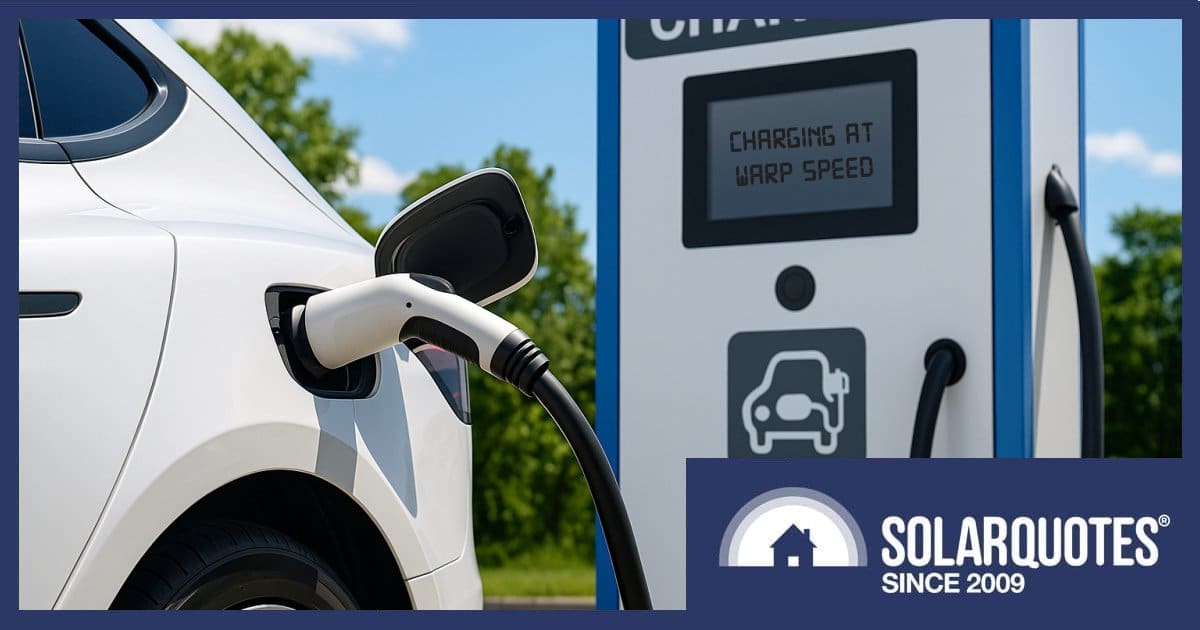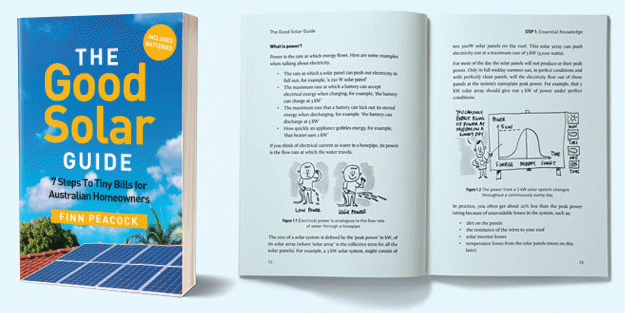
The latest grants from New South Wales’ Minns Government and co-contributions from the private sector will see $41.2 million invested to install another 246 fast and ultra-fast EV chargers across the state; all powered by renewables.
The NSW Electric Vehicle Strategy aims to support an increase in EV uptake to more than 50% of new car sales by 2030–31, and help the state achieve a goal of net-zero emissions by 2050.
Battery electric vehicle (BEV) and plug-in hybrid (PHEV)1 vehicle sales grew to make up almost 10 per cent of new car sales in NSW last year. In the first quarter of this year, BEVs only accounted for around 6.5% — but throw in a spike in PHEV popularity and the proportion was close to 11%.
A key action under the Strategy to support greater EV uptake is a state government investment of $209 million for ‘world-class’ electric vehicle charging coverage across the state. This includes $149 million being poured into fast charging grants under co-funding arrangements with operators who will install and operate stations at 100-kilometre intervals across all major state highways, and every 5 kilometres in NSW metropolitan areas.
The latest round of related grant funding from the Minns Government of $16.1 million has been boosted to $41.2 million by the five grant recipients: BP, Energy Australia, Plus ES, Tesla and NRMA. Under this round, fast/ultra-fast EV chargers will be installed in 38 towns and suburbs across the state, a list of which can be found here.
Each site will be receiving between $200,000 and $600,000 in grant support.
Inclusivity And Functionality Focus
“Many of the chargers will be accessible for drivers with a disability,” states the NSW Government announcement. “Additionally, they will include pull-through charging bays to accommodate EV drivers towing caravans, boats and trailers, making it easier for long-distance travellers to charge their EVs.”
According to the NRMA, many sites will be capable of delivering up to 400kW for EVs that can handle such a high charging rate. Most can’t, but as time goes on more new models will be able to take advantage of this.
Construction on the new sites under this round will begin this year, with all funded locations expected to be online by 2027 — and there’s further funding for more stations to come.
Finding A Public Charger
Even without these new stations, the number of public EV charger locations across New South Wales (and Australia for that matter) has been growing rapidly over the last few years. This EV public charging station map identifies where a vehicle can be topped up, but note many won’t be fast or ultra-fast chargers. The map is powered by Plugshare, which is also available as an app.
Amp Up Home EV Charging And Save
Level 3 fast charging may be convenient, but can be expensive and create some additional wear and tear on an EV battery if performed on a regular basis; particularly if the EV doesn’t have active thermal management — although most do these days.
The plug-in ‘granny’ or ‘trickle’ chargers (Level 1) supplied with EVs aren’t much chop, but suit some owners. But as these devices are so slow, the time needed for charging may spill over into periods of the day when electricity costs the most if on a Time of Use (ToU) electricity plan.
A step up from the granny charger is a hard-wired AC charger (Level 2), which depending on the device and the EV can charge between 3 and 10 times faster. Couple Level 2 charging with solar panels on a home’s rooftop and it can be a match made in heaven, especially if the device has the smarts to use surplus solar energy.
We’re now spoiled for home EV charger choice in Australia – so much so that it can be confusing trying to figure out which one to buy. You can learn everything you need to know in the SolarQuotes home EV charging guide, which includes product comparisons, estimated pricing and recommendations.
Footnotes
- PHEVs have an electric motor and an internal combustion engine (ICE). While a conventional hybrid car relies on regenerative braking and the internal combustion engine to recharge its battery, a PHEV can also be plugged into an external power source to recharge. ↩

 RSS - Posts
RSS - Posts



Interesting, but I note that most suburbs that will benefit from this grant are in metro Sydney. On my regular trip along the Hume south towards Melbourne the EV fast charging situation is not great to say the least. You would think the Hume is a top priority for the NSW government being such a key connection. Many chargers are regularly out of action for long periods of time and there simply are not enough fast, 100kW+ chargers around. The so-called very fast Tesla chargers in Yass and Albury only offer 90kW or so for my Kia EV6 which supports much higher charging speeds. A positive exception are the new, very fast Evie chargers at Sutton Forest (over 200kW!).
Who are you and what have you done with George?
Or is Anthony editing your posts now? 😄
FWIW I’m reading more the [redacted] climate skeptic site. I don’t read most pieces, and some are less suited for folk who aren’t in particular science fields, but there’s interesting points, if a dearth of Aussie-centric content.
Hi George,
Just a reminder from the moderation team, we enjoy good faith arguments and helpful comments, but everyone here is our guest.
We invest a lot of time and toil to bring people demonstrably good information and we love learning from the industry experts in the comments.
However there is a lot of lazy analysis, bad anecdotes, nit picking, off topic, libellous, and plain bats#it crazy to plough through and delete, in order to try and keep discussions reasonable.
For spammers, dimwits and useful id!ots posting links to science denial, they’ll increasingly go out the airlock.
Sometimes it’s hard not to feed the trolls but there’s a measure of schadenfreude in knowing metaphorically that blood boils in the silence of space.
Again, the moderation team reads all the dross to pick out the gold, so we do appeal to everyone; please make helpful suggestions in future.
Cheers
George Kaplan: – “As for the idea of EV uptake to more than 50% of new car sales by 2030–31, and net-zero emissions by 2050, that’s likely to come quicker than people expect…”
Yep. It seems petroleum fuels are only going to get scarcer & more expensive!
US shale oil production seems to have masked peaking crude oil production in the rest of the world since 2018.
https://crudeoilpeak.info/us-shale-oil-seems-to-cover-up-peaking-crude-oil-production-in-the-rest-of-the-world-since-2018
Quietly & without much fanfare, both US shale oil & shale gas appear to have passed their zenith late-2023. It seems depletion, not market dynamics or regulatory overreach, is the central culprit.
https://blog.gorozen.com/blog/the-depletion-paradox
And is Australia prepared for surprises in the Strait of Taiwan?
https://crudeoilpeak.info/australian-diesel-imports-update-january-2025-data-preparing-for-surprises-in-the-strait-of-taiwan
Tesla Charger is 400V, that’s why you only get ~90kW. They do support much faster charging around ~250kW for Tesla.
I have heard that before. Why is it though that only Teslas appear to get higher charging speeds at those Tesla chargers, I have seen a 2023 model Y get around 150kW? Which car model can charge at 250kW at a 400V Tesla charger?
Can we please stop the myth that level one chargers aren’t much chop. It is lazy to say otherwise.
The reality is they probably are fine for the vast majority of people given the average driving distances and when there is an issue you could go to a public charger.
As to cost, even if you didn’t change your home energy plan you could still manage it and still be better off.
I think the issue is more “can you charge at home or not”. Level 1 is probably fine. If not get a level 2 installed. If you can’t or are travelling then programs to increase public chargers at very relevant.
First, re Level 1 chargers: I used one of these for years. In that time I replaced about 3 power points because they overheated. Granny chargers are OK, but watch for overheating contacts!
Second, I emailed Mr Minns asking that ALL chargers installed in this contract be Disability accessible. Not hard: make parking spots 50% wider (a cost but needed) Also park must be approximately level. As well install the Charging hardware on the same level as parking, with Wheelchair room around pedestal (so no plinth). This is in design, so easily accommodated. There may need to be a dispensation for reducing general parking to widen EV charging area.
The reason for this is because it makes charging easier for everyone, but persons with a disability will not need to wait for a ´disabled´ charger & might mean these could be restricted for general use. I am not disabled, but I have seen people struggle at chargers. There was even a report about a person who had to call for help to disconnect.
Hi Doug,
Very good point about accessibility, I wish they would make more bays suitable for cars towing trailers too.